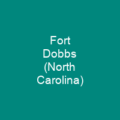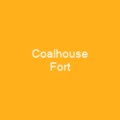Fort Worth: A City of Cowboys and Culture

Fort Worth is a sprawling metropolis in North Texas, covering nearly 350 square miles and home to over 996,756 residents. It’s the fifth-most populous city in Texas and the twelfth-largest in the United States.
The Birth of Fort Worth
Fort Worth was established in 1849 as an army outpost, named after Major General William Jenkins Worth. The Treaty of Bird’s Fort signed in 1843 paved the way for trading posts and eventually led to the establishment of seven army posts, including Fort Worth.
The Early Days
General William S. Harney ordered Major Ripley A. Arnold to establish a new fort site near the Trinity River. In August 1849, Arnold moved the camp to the north-facing bluff overlooking the mouth of the Clear Fork of the Trinity River. The United States War Department named it Fort Worth on November 14, 1849.
Despite its strategic location, Fort Worth faced challenges during the American Civil War, with a population drop to just 175 people. However, by 1872, several businesses had opened, marking the city’s recovery and growth.
The Wild West and Beyond
Fort Worth became known as ‘Cowtown’ due to its role in the cattle industry along the Chisholm Trail. The nickname Panther City was briefly used after a severe economic blow but was eventually replaced by Cowtown.
The Texas and Pacific Railway completed in 1876 stimulated a boom, transforming Fort Worth into a premier center for cattle wholesale trade. This period saw the rise of ‘Hell’s Half-Acre,’ an area notorious for its violence and entertainment venues like saloons and dance halls.
Law and Order
Timothy Isaiah ‘Longhair Jim’ Courtright was elected city marshal in 1876 to address the problems in Hell’s Half-Acre. However, his efforts faced resistance from businessmen who saw the area as a source of income.
The area continued to thrive, attracting notables like Bat Masterson and Doc Holliday. A public shootout in 1887 led to Courtright’s murder, but the Acre remained a place of excitement until its eventual decline by 1919.
Modern Fort Worth
In recent years, Fort Worth has seen significant growth and diversification. The city is home to major companies like American Airlines Group, John Peter Smith Hospital, Pier 1 Imports, and AT&T. It promotes itself as the ‘City of Cowboys and Culture,’ with a strong local arts patronage and numerous festivals.
The Fort Worth Zoo, Botanic Garden, and Nature Center are just some of the attractions that draw visitors to this vibrant city. The city’s economy has diversified over time, from its initial focus on cattle drives to embracing technology and innovation.
Transportation and Infrastructure
Fort Worth’s transportation network includes major highways like Interstate 30, 20, 35W, and 820. The city also has a robust public transit system with bus services via Trinity Metro and the Trinity Railway Express.
The Dallas-Fort Worth International Airport serves as a major hub for air travel, while Fort Worth Alliance Airport, Meacham International Airport, Spinks Airport, and Naval Air Station Joint Reserve Base Fort Worth provide additional air transportation options.
Demographics and Diversity
As of 2022, Fort Worth’s population was approximately 956,709 residents. The city has become more diverse over the years, with a significant Hispanic or Latino American population and growing Asian American communities.
The racial composition includes non-Hispanic whites (38.2%), Black or African Americans (18.6%), and various other ethnic groups. Fort Worth is known for its vibrant cultural scene, hosting events like the Cowtown Marathon and the Fort Worth Stock Show and Rodeo.
Education and Media
The city’s public library system, Fort Worth Public Library, serves as a hub of knowledge and resources. Most of Fort Worth is served by the Fort Worth Independent School District, with private schools offering secular and parochial education options.
Fort Worth has one major daily newspaper, the Fort Worth Star-Telegram, along with several magazines, radio stations, and online news outlets like the Fort Worth Report. The city’s media market is shared with Dallas, with a wide range of broadcast signals covering various formats and interests.
A City in Transition
Fort Worth has come a long way from its humble beginnings as an army outpost to becoming a bustling metropolis known for both its Western heritage and modern culture. As it continues to grow, Fort Worth remains a city that embraces its past while looking towards the future.
This article provides a comprehensive overview of Fort Worth’s rich history, diverse demographics, and vibrant cultural landscape, highlighting how this city has evolved over time.
You want to know more about Fort Worth, Texas?
This page is based on the article Fort Worth, Texas published in Wikipedia (retrieved on November 25, 2024) and was automatically summarized using artificial intelligence.






